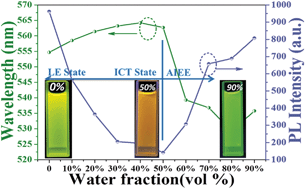Cyanostilben-based derivatives: mechanical stimuli-responsive luminophors with aggregation-induced emission enhancement†
Abstract
Cyanostilbene derivatives with the aggregation-induced emission enhancement (AIEE) activity are prepared by Knoevenagel and Suzuki reactions. Among them, the dye (Z)-2,3-bis(4′-(diphenylamino)-[1,1′-biphenyl]-4-yl)acrylonitrile (CNS-4)


 Please wait while we load your content...
Please wait while we load your content...